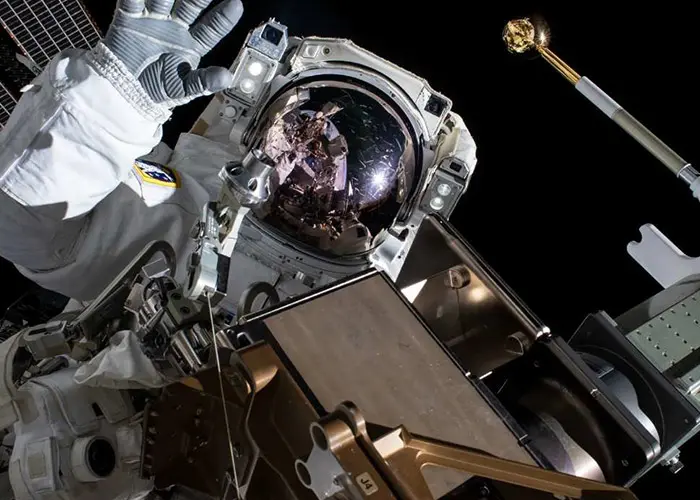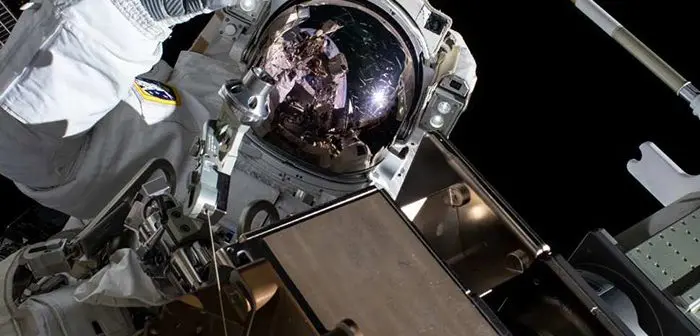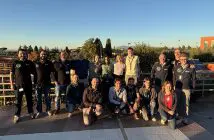
NASA will hold a news conference this week to discuss three upcoming spacewalks by International Space Station (ISS) astronauts later this month.
NASA will hold the conference at 6.00 a.m. (AEST) on Wednesday, June 12, 2024.
For the first spacewalk, NASA astronauts Tracy C. Dyson and Matt Dominick will exit the station’s Quest airlock to remove a faulty electronics box, called a radio frequency group, from a communications antenna on the starboard truss of the space station. The pair also will collect samples for analysis to understand the ability of microorganisms to survive and reproduce on the exterior of the orbiting laboratory.
Dyson will serve as spacewalk crew member one and will wear a suit with red stripes. Dominick will serve as spacewalk crew member two and will wear an unmarked suit. US spacewalk 90 will be the fourth for Dyson and the first for Dominick. NASA will announce participating crew members for US spacewalks 91 and 92 following the completion of the first and will provide additional coverage details.
For the second spacewalk, astronauts will remove and replace the external high-definition camera located at camera port nine on the orbiting laboratory. This camera is one of several that provide external views of the space station. Additionally, crew members will complete a cable connection fit check for the alpha magnetic spectrometer, a particle physics experiment on the station’s exterior. If not completed during US spacewalk 90, the astronauts will begin by collecting microorganism samples.
For the third spacewalk, crew members will remove and replace a rate gyro assembly, which provides data on the orientation of the space station. Astronauts will then attach a support bracket, called a modification kit, in preparation for future installation of the orbiting laboratory’s next International Space Station Roll-Out Solar Array on the 2A power channel on the port truss.
Live coverage of the news conference will air on NASA+, NASA Television, the NASA app, YouTube, and the agency’s website.





